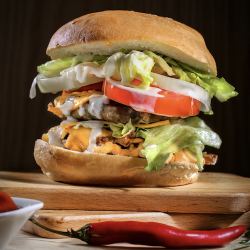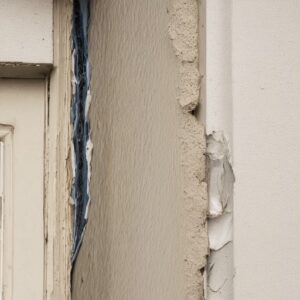Water damage can be a silent destroyer, especially for restaurants with exterior walls constantly exposed to the elements. Beyond aesthetic concerns, exterior wall water damage can compromise structural integrity, lead to mold growth, and create hazardous conditions for employees and customers alike. In this comprehensive guide, we’ll explore three key ways a restaurant can detect exterior wall water damage, along with proactive measures to prevent its occurrence.
Visible Stains and Discoloration
One of the most apparent signs of exterior wall water damage is visible stains and discoloration on both the interior and exterior surfaces. Restaurants should regularly inspect their exterior walls for any signs of water stains or discoloration, especially after heavy rainfall or storms. These stains often appear as dark patches or streaks on the walls, indicating moisture penetration.
Interior Inspection: Inside the restaurant, look for water stains on walls, ceilings, and baseboards adjacent to exterior walls. Pay particular attention to areas near windows, doors, and vents, as these are common entry points for water.
Exterior Inspection: Conduct a thorough visual inspection of the exterior walls. Look for areas where paint or stucco is peeling, bubbling, or blistering, as these may indicate water infiltration. Additionally, inspect for cracks or gaps in the walls where water could seep in.
Preventive Measures: To prevent exterior wall water damage, restaurants can invest in routine maintenance, including caulking and sealing any cracks or gaps in the walls. Regularly inspect and repair damaged exterior finishes to ensure water tightness. Consider applying a waterproofing sealant to vulnerable areas to provide an extra layer of protection against moisture intrusion.
Efflorescence and Mold Growth
Efflorescence, the white, powdery substance that forms on surfaces exposed to moisture, is another telltale sign of exterior wall water damage. In addition to efflorescence, restaurants should also be vigilant for mold growth, which thrives in damp environments and can pose serious health risks to employees and customers.
Identifying Efflorescence: Efflorescence often appears as a white or grayish residue on the surface of walls, particularly in areas where water has evaporated, leaving behind salt deposits. Restaurants may notice efflorescence on exterior walls, especially in areas prone to water exposure, such as below windowsills or along the base of the building.
Detecting Mold: Mold growth may not always be visible on the exterior surface of walls but can manifest as musty odors or allergic reactions in occupants. Inside the restaurant, look for signs of mold growth on walls, ceilings, and other surfaces. Pay attention to areas with poor ventilation or high humidity levels, as these conditions promote mold proliferation.
Preventive Measures: To prevent efflorescence and mold growth, restaurants should address underlying moisture issues promptly. Improve ventilation in areas prone to dampness, such as kitchens and bathrooms, to reduce humidity levels. Ensure proper drainage around the building to prevent water from pooling against exterior walls. Regularly clean and maintain gutters and downspouts to prevent water from overflowing and seeping into the walls.
Deterioration of Building Materials
Water damage can cause significant deterioration of building materials over time, compromising the structural integrity of a restaurant’s exterior walls. From rotting wood to corroding metal, the effects of water infiltration can be costly and extensive if left unchecked.
Wood Rot: For restaurants with wooden exterior walls or trim, wood rot is a common consequence of prolonged exposure to moisture. Inspect wooden surfaces for signs of decay, including softness, discoloration, and fungal growth. Pay close attention to areas where wood meets the ground or is in contact with water, such as door frames and window sills.
Metal Corrosion: Metal components, such as flashing, fasteners, and structural supports, are susceptible to corrosion in the presence of moisture. Check for rust or corrosion on metal surfaces, particularly in areas exposed to the elements. Address any corroded metal promptly to prevent further deterioration and structural damage.
Preventive Measures: To mitigate the risk of material deterioration due to water damage, restaurants can take proactive measures such as using moisture-resistant building materials, installing proper drainage systems, and applying protective coatings to vulnerable surfaces. Regular inspections and maintenance are crucial for identifying and addressing issues before they escalate.
Conclusion
Exterior wall water damage can pose serious risks to the integrity and safety of a restaurant’s building structure. By familiarizing themselves with the signs of water damage and implementing proactive measures to prevent its occurrence, restaurant owners and managers can safeguard their establishments against costly repairs and ensure a safe and healthy environment for employees and customers alike. Regular inspections, maintenance, and prompt attention to any signs of water infiltration are key to preserving the longevity and integrity of a restaurant’s exterior walls.


